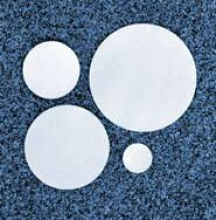Crystalline Silica Exposure in Wisconsin

This week the Occupational Safety and Health Administration (OSHA) fined a carbon steel foundry in Wisconsin $95,480 for willfully overexposing their workers to crystalline silica, a known carcinogen. Ironically, this news comes shortly after a group of citizens petitioned the Wisconsin Department of Natural Resources (DNS) to adopt more stringent rules governing emissions of respirable crystalline silica. Crystalline silica is a particularly dangerous air pollutant because it is a basic component of soil, sand, brick, granite and other common materials. As a byproduct of many everyday industrial processes like mining, construction, and glass manufacturing, it is a ubiquitous presence for some workers. Industrial processes that involve abrasive blasting or the use of sand and quartz are also sources of crystalline silica exposure, which is why many of these workers are concerned over the increasing popularity of fracking in their state. The hydraulic fracturing (AKA “Fracking”) process involves fracturing rock layers with a fluid that includes sand or ceramic material in order to extract the gas underneath. As you can tell from the description, stirring up compressed rock dust and sand particles is a definite health concern, so it’s good to see those at risk aware of it and addressing the matter. The petitioners are asking the Wisconsin DNS to classify respirable crystalline silica as a hazardous air pollutant under their air toxics rule. Furthermore, the petitioners recommend that the DNS comply with the standard set by the State of California Office of Environmental Health Hazard Assessment which dictates a limit of 3 micrograms per cubic meter and requires consistent monitoring and enforcement. Determining the concentration of crystalline silica and amorphous silica by the National Institute for Occupational Safety and Health (NIOSH) standards requires capturing particulates from an air sample on a 0.45 micron, 25 mm diameter Silver Membrane Filter and then analyzing the particulate matter for silica using X-Ray diffraction (XRD). See NIOSH methods 7500 and 7501 for the complete procedure. Read the full petition by Wisconsin citizens here. Also see this report on silica from the Wisconsin DNS.
- Most Viewed Blog Articles (5)
- Company News (285)
- Emerging Technologies (64)
- Microbiology and Life Science News (93)
- Water and Fluid Separation News (97)
- Filtration Resources (93)
- Product News (19)


![Join Sterlitech at BIO 2024 [Booth #5558]: Exploring the Future of Biotechnology](https://www.sterlitech.com/media/blog/cache/300x200/magefan_blog/b4.jpeg)



